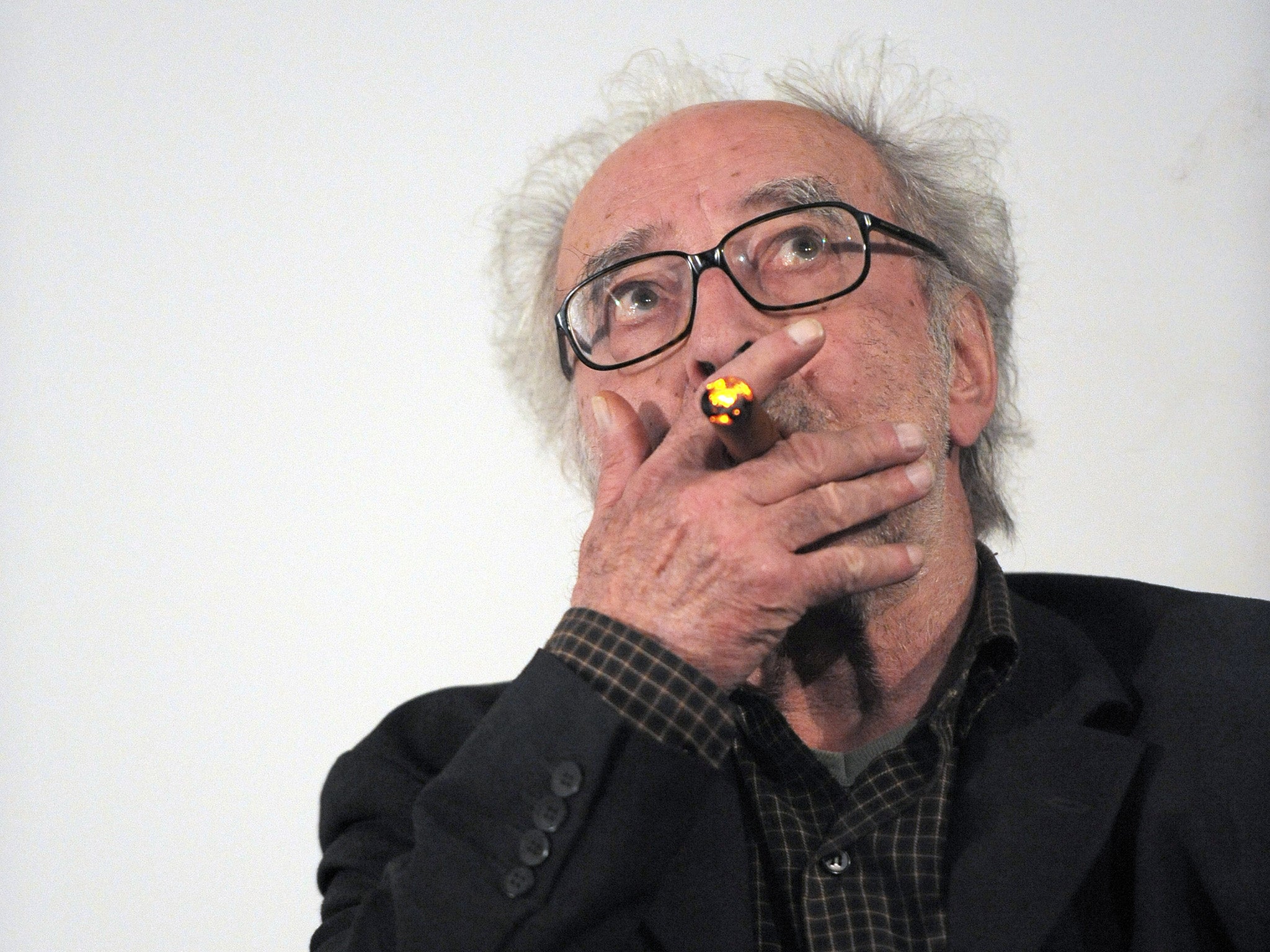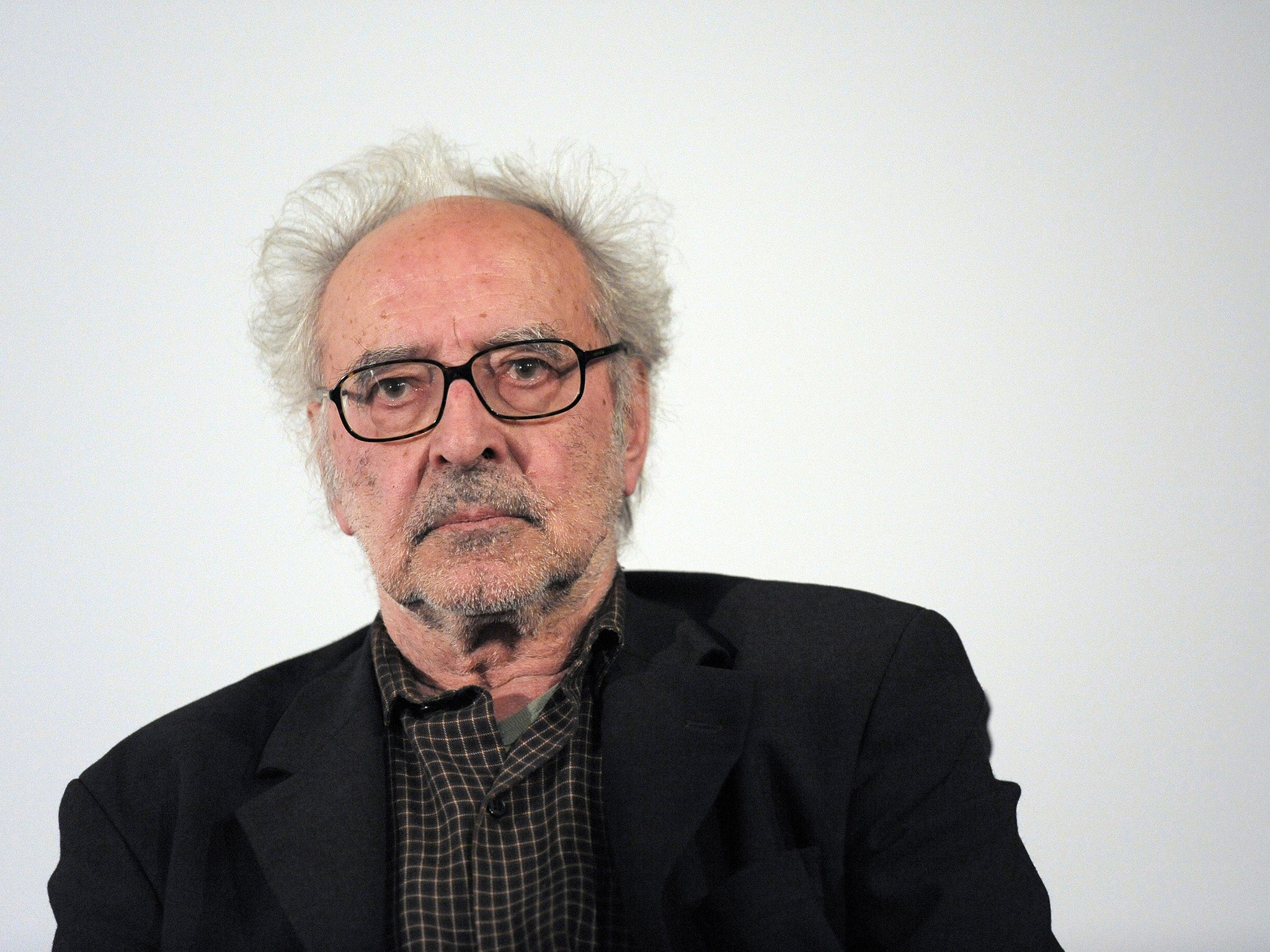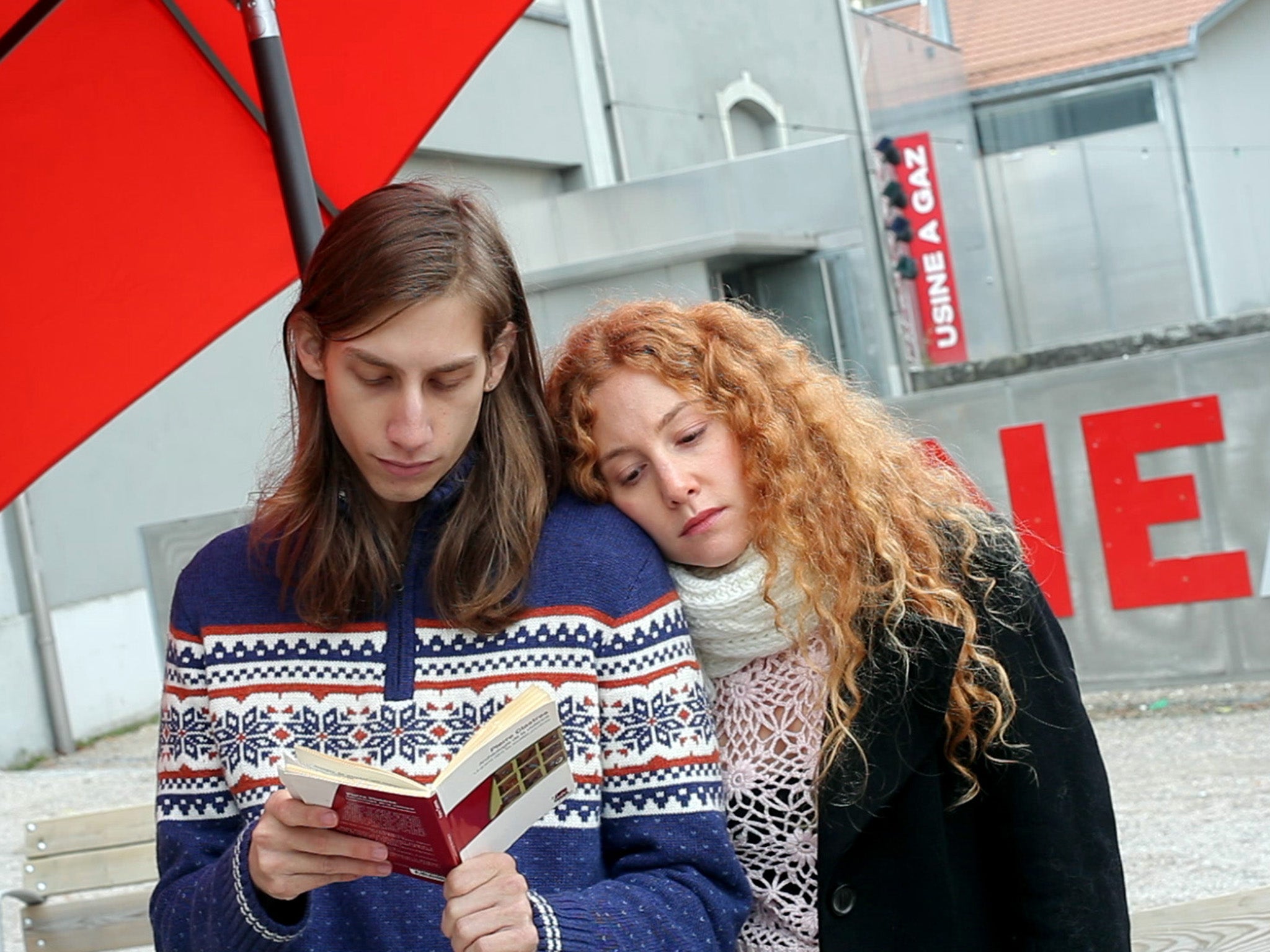The weird world of Jean-Luc Godard: As his new movie Goodbye to Language 3D launches, two of its stars reveal a bizarre routine
What is it like to work with the legendary auteur?

When Thierry FrEmaux, General Delegate of the Cannes Film Festival, announced that Goodbye to Language 3D, the latest film from Jean-Luc Godard, was to play in competition, he also stated that the director had promised to come to the festival.
When the day came, Godard stayed at home in Rolle, a town on Lake Geneva in Switzerland, and instead of a press conference sent a cryptic audio-visual missive, mixing footage of himself talking to camera stating things like, “I’m not where you think I am”, with clips from his own repertoire of classics such as Alphaville and King Lear.
It was classic Godard: predictable in his unpredictability and obliqueness. His failure to turn up didn’t prevent him picking up the Jury Award, which he shared with Xavier Dolan. The jury, headed by Jane Campion, commented on the conscious decision to share the prize between the oldest director in competition, 83-year-old Godard, and the youngest, 25 year-old Dolan. The only similarity between the films was that they both played with formats, Godard making his first 3D feature film, while Dolan chose as aspect ratio of 1:1 that makes the image on screen look square, like an Instagram picture. It was a prize that didn’t sit well with many observers at Cannes, the one place in the world where holding anyone in the same breath as Godard still remains the equivalent of sacrilege.
The new Godard film is typical of much of the auteur’s recent output. It’s an erudite polemic and would take someone with a PhD in film theory, and a lot of time on their hands, to deconstruct and decipher all the quotes, images and ideas that the director packs into the 70-minute run-time. It’s a challenge, but one that entrusts rewards to those willing to work for them.
One thing that stands out is that the man often credited with inventing the jump-cut, and modern editing techniques – his debut film, 1960’s A Bout de Souffle (Breathless) set the template for modern cinema – is now doing the same for 3D. Rather ingeniously, in the defining moments of Goodbye to Language 3D, the two cameras necessary to filming a 3D image move in different directions, creating two images in the same frame. The result is that if you close your left eye you see one image, your right another. Keep them both open and whichever of your eyes has strongest vision, will determine exactly what you see. Of course, being the man who famously stated, “all you need to make a movie is a girl and a gun’, Godard makes use of a gun and girls. If this sounds like information overload, well it is, and the film’s proponents, of which there are many, claim that it’s a comment and reflection of our smartphone-dictated lives. After all Godard is well versed in dismantling movie conventions and replacing them with new aesthetics that make nods to his favourite artists and writers.

Yet amid the technical arguments and his failure to go to Cannes, there’s one facet that Godard seems to want to hide. What is the 83-year-old like as a man? Is he still the rebel? In 1968 he forced the premature closure of the Cannes Film Festival when, alongside François Truffaut, he called a press conference asking for the festival to show solidarity with the students fighting on the streets in Paris. Back then he called for revolution, solidarity with the workers, but today his polemics are only witnessed on screen. A Casanova? He married two of his leading ladies, his first marriage to A Woman is a Woman star Anna Karina lasted four years from 1961, and 1967 saw the start of his 12-year marriage to La Chinoise star Anne Wiazemsky. He met his long-term companion Anne-Marie Miéville in 1972. She has collaborated with Godard as a scriptwriter, film editor, and co-director. It’s said that hers is the voice that can be heard of screen at the end of the new film.
Two of the dwindling number of people that has been able to get close to Godard in recent years are Goodbye to Language stars Zoé Bruneau and Kamel Abdelli. Godard stated in his missive to Cannes, “I haven’t taken part in film distribution for a long time,” and he’s left it to his stars to do the talking, although they admit to being as bewildered by his references as most of us. They paint an erratic picture of Godard, still a loose cannon, yet like for some uncle who gave us great presents when we were children, their enduring affection allows them to forgive some of his more batty behaviour. The man they describe to me, whilst being a master of his art, also comes across as eccentric and, notably, he seems like a lot of hard work.
“He didn’t give us any explanations or guides to the story,” says Bruneau when we meet in a London hotel. Abdelli adds: “He said to us, if you want any explanations or insights into the characters all you need to do is ask. And when we asked, he would say, ‘I don’t want to explain everything to you’.”
There was no real script either, just a series of written prose pieces with jottings and ideas. Abdelli recalls: “In the text there were a lot of references to authors, poets, philosophers, painters and mathematicians, so each time he gave us the text to read we had to go straight on to Google to try and make sense of it. You couldn’t read the scenario – you could feel it and look at it. You can read some phrases and dialogues, but it didn’t reveal who would speak the dialogue.”Godard makes Mike Leigh look like a bullet train. “We were rehearsing for almost two years,” says Bruneau. “We gave him two years of our lives, a time that seemed to go on longer since the shoot was always being postponed.”

Watch Apple TV+ free for 7 day
New subscribers only. £8.99/mo. after free trial. Plan auto-renews until cancelled.
ADVERTISEMENT. If you sign up to this service we will earn commission. This revenue helps to fund journalism across The Independent.

Watch Apple TV+ free for 7 day
New subscribers only. £8.99/mo. after free trial. Plan auto-renews until cancelled.
ADVERTISEMENT. If you sign up to this service we will earn commission. This revenue helps to fund journalism across The Independent.

Take the first day of shooting, or what was supposed to be the first day. “We left Paris at 6am and got the train to Switzerland,” says Abdelli. (Godard, born in Paris, is the son of a Swiss physician and has spent most of his life living in Switzerland).
“Three hours later we arrived at his door, and he said, ‘go home, I don’t feel like filming today’. And we got back on the train to Paris.”
After two years of waiting, what was another day of waiting to Bruneau? She kept a diary of her time on set, and the result, En Attendant Godard (Waiting for Godard) was published to coincide with the Cannes debut. For all the frustrations, and the difficulties working for him, she does have only affection for him.
“When we watched the film in Cannes, we were as surprised by the results. Visually it’s stunning and there were bits of the story, enough that I could understand what was going on.”
Because we don’t see Godard, apart from on the occasional documentary he releases himself, it’s easy to forget that he’s an octogenarian and still working and being as creative as anyone in cinema today. Peter Greenaway has gone on record saying that he will commit suicide at 80, because hardly anyone does an important work after they hit this landmark. But then he has never been Godard.
It says much about the dwindling public status of Godard, that, whereas in the 1970s his most polemical films would be given a star billing at cinemas, Goodbye to Language will be released on Blu-ray and DVD. It means that only a few with 3D Blu-ray players will be able to sample the most exciting technical aspects of the film in the UK. It’s a film that demands repeated viewings, and the help of many essays that have appeared on the internet decoding the film. Delve into these, and a universe of ideas is revealed. While Godard has discarded the American pop-cultural references that were central to his most famous works from the 1960s and the political slogans of the 1970s, the work remains as important as ever and Goodbye to Language 3D is his most important film in decades. To dismiss it would be like jettisoning A Brief History of Time because it’s not as easy or fun to read on the beach as Gone Girl.
‘Goodbye to Language 3D’ is out now on Blu-ray and DVD
Join our commenting forum
Join thought-provoking conversations, follow other Independent readers and see their replies
Comments